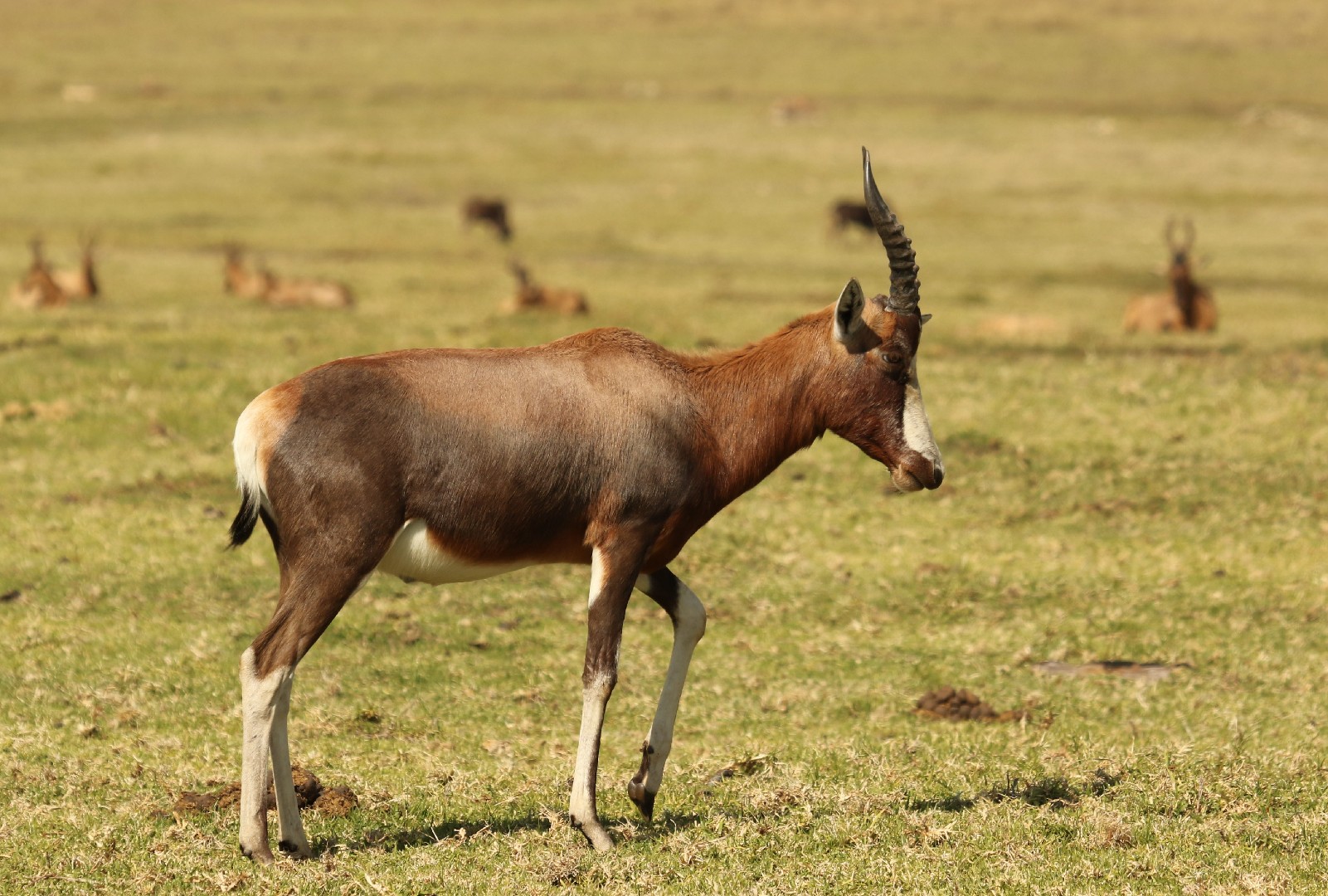Blesbok
A species of Tsessebes Scientific name : Damaliscus pygargus phillipsi Genus : Tsessebes
Blesbok, A species of Tsessebes
Scientific name: Damaliscus pygargus phillipsi
Genus: Tsessebes
Content
Description General Info
 Photo By Derek Keats , used under CC-BY-2.0 /Cropped and compressed from original
Photo By Derek Keats , used under CC-BY-2.0 /Cropped and compressed from original Description
Blesbok, an African bovid, showcases a unique survival behavior known for herd synchrony; members almost simultaneously perform activities such as feeding, resting and mating. Furthermore, blesbok has a distinction for its particular dietary habits, primarily grazing during dawn and dusk, frequently coveting on monocots, displaying a specific feeding strategy relevant to fluctuating climatic conditions.
General Info
Lifespan
18-20 years
Diet
Blesbok primarily subsists on a diet of various grasses and plant material, showing a predilection for short, green grasses. Distinctive dietary characteristics include selective grazing, focusing primarily on the nutritious parts of plants.
Appearance
Blesbok boasts an athletic, streamlined body standing around 1 meter at the shoulder. Its coat is predominantly smooth and glossy, displaying unique shades of bright brown to cinnamon. Both genders possess lyre-shaped horns, with the males' reaching up to 37 centimeters. Males are slightly larger and darker in color than females. Younger individuals have lighter coloration, which darkens with maturity.
Behavior
Blesbok is a diurnal herbivore, grazing in the early morning and late afternoon. They practice lek mating, with males inhabiting territories marked by dung middens. Known for their strong social structure, they group in separate male and female herds outside of the breeding season, reuniting during mating periods. Notably, blesbok uses strategic motion to confuse predators, demonstrating adaptive behaviors for survival.